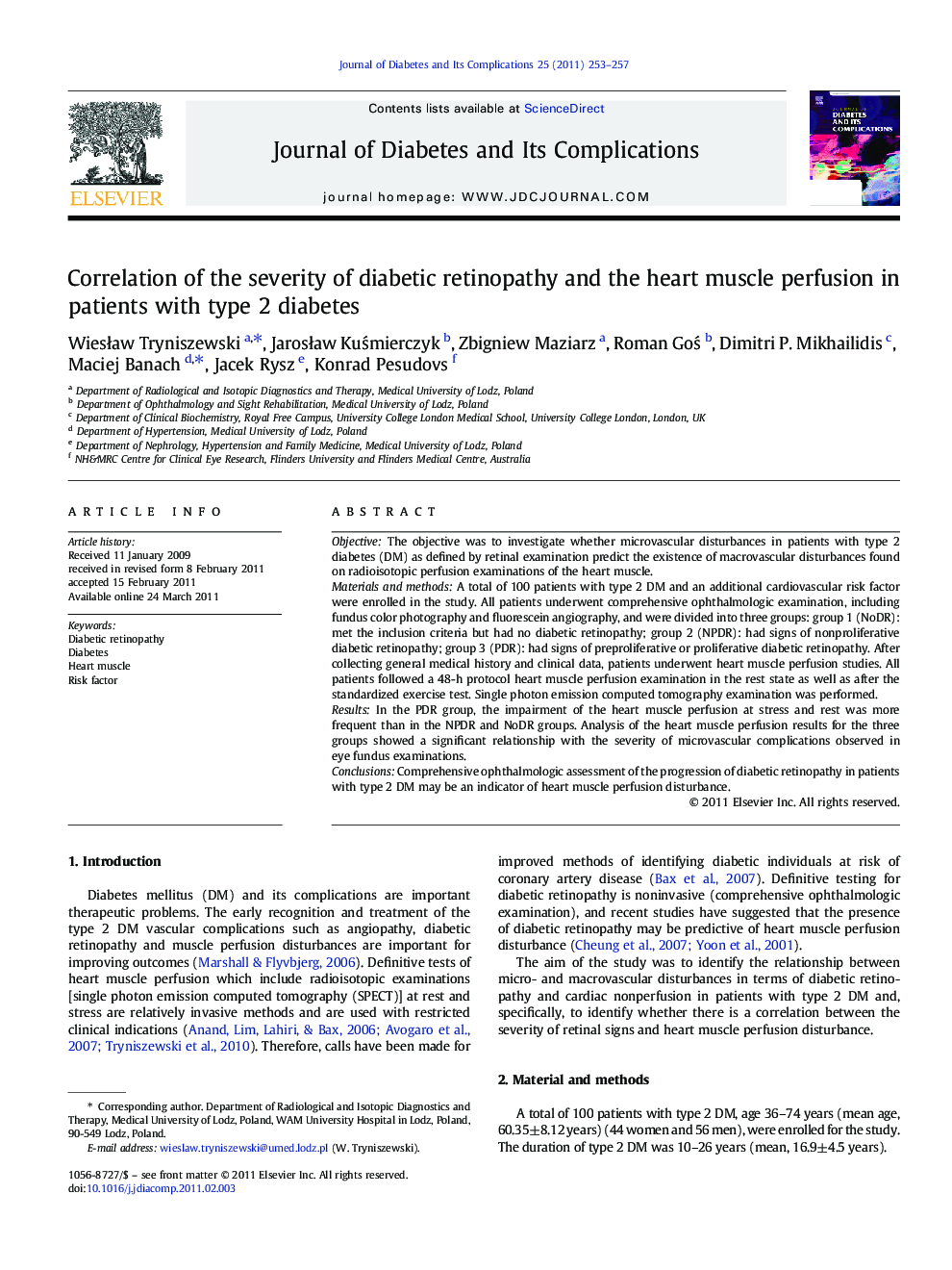| Article ID | Journal | Published Year | Pages | File Type |
|---|---|---|---|---|
| 2804737 | Journal of Diabetes and its Complications | 2011 | 5 Pages |
ObjectiveThe objective was to investigate whether microvascular disturbances in patients with type 2 diabetes (DM) as defined by retinal examination predict the existence of macrovascular disturbances found on radioisotopic perfusion examinations of the heart muscle.Materials and methodsA total of 100 patients with type 2 DM and an additional cardiovascular risk factor were enrolled in the study. All patients underwent comprehensive ophthalmologic examination, including fundus color photography and fluorescein angiography, and were divided into three groups: group 1 (NoDR): met the inclusion criteria but had no diabetic retinopathy; group 2 (NPDR): had signs of nonproliferative diabetic retinopathy; group 3 (PDR): had signs of preproliferative or proliferative diabetic retinopathy. After collecting general medical history and clinical data, patients underwent heart muscle perfusion studies. All patients followed a 48-h protocol heart muscle perfusion examination in the rest state as well as after the standardized exercise test. Single photon emission computed tomography examination was performed.ResultsIn the PDR group, the impairment of the heart muscle perfusion at stress and rest was more frequent than in the NPDR and NoDR groups. Analysis of the heart muscle perfusion results for the three groups showed a significant relationship with the severity of microvascular complications observed in eye fundus examinations.ConclusionsComprehensive ophthalmologic assessment of the progression of diabetic retinopathy in patients with type 2 DM may be an indicator of heart muscle perfusion disturbance.
